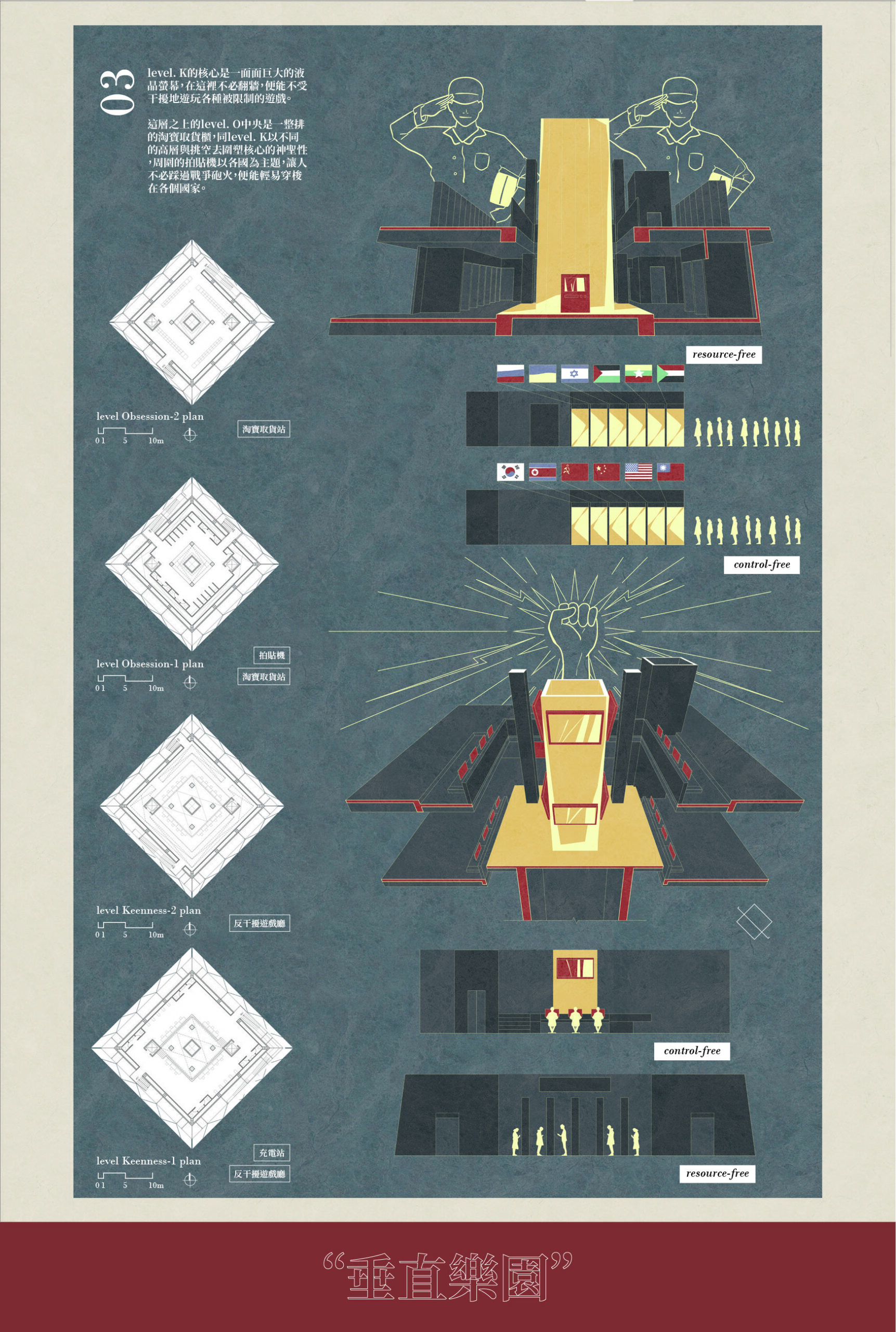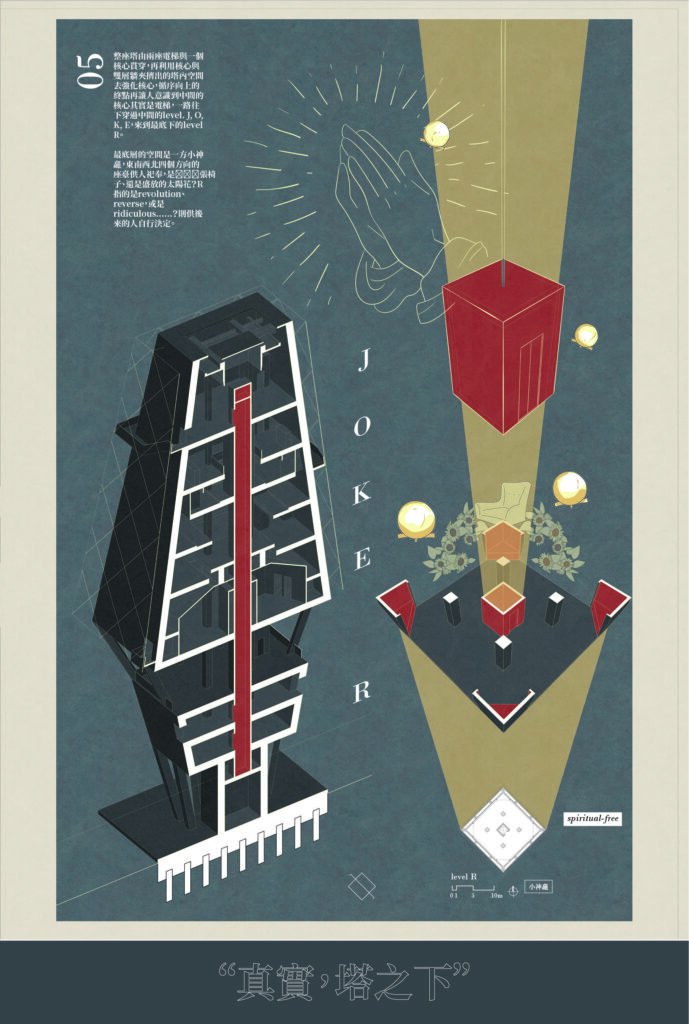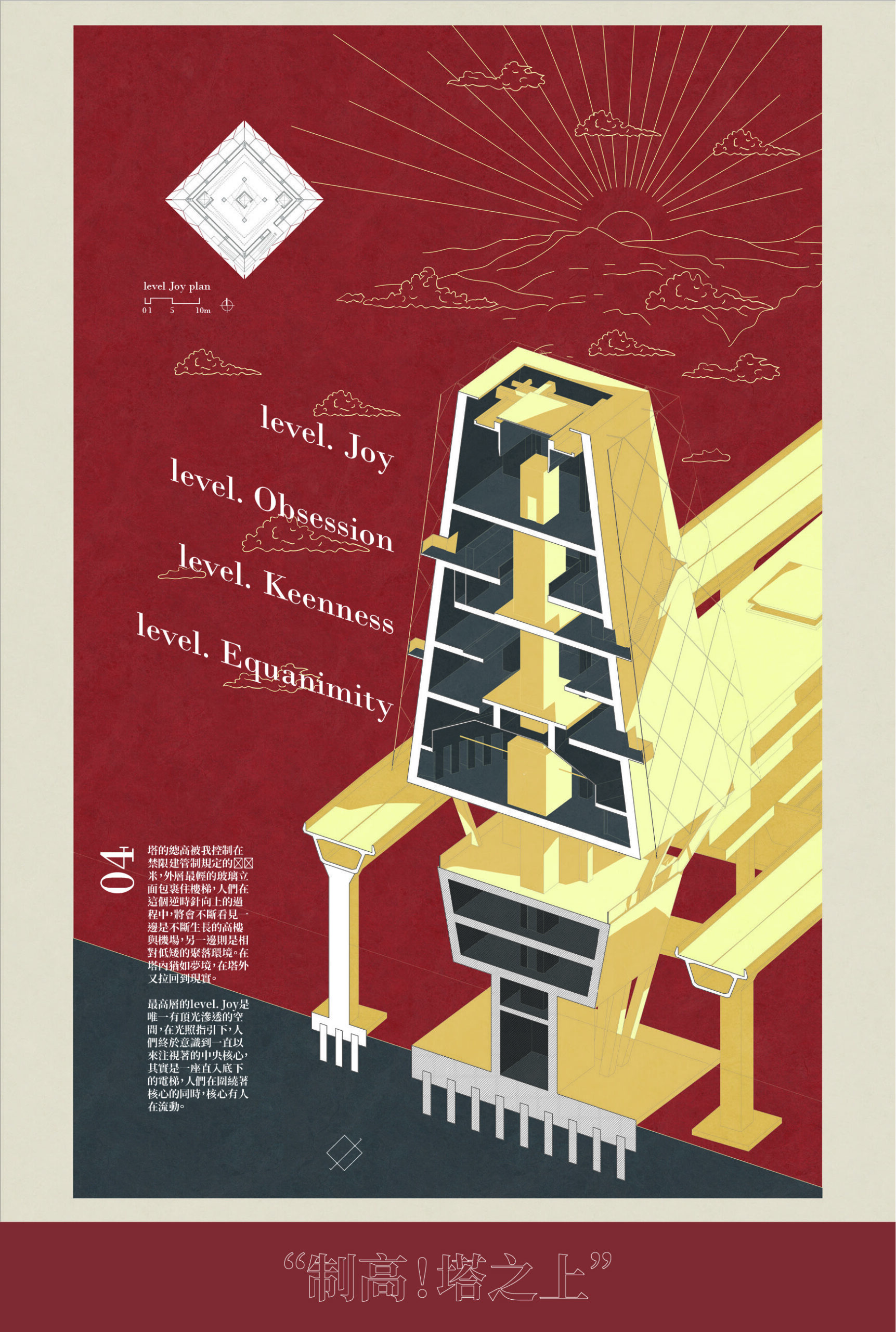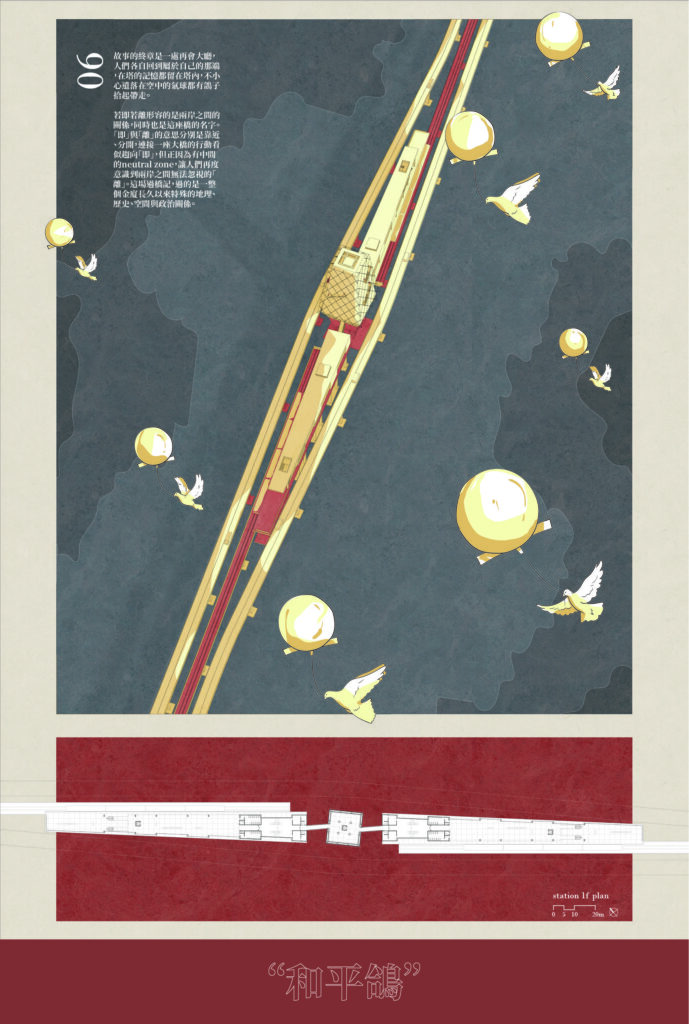若即若離;過橋記
To be Close yet Distant
莊昱潔

荒謬而真實的偉大計劃
設計說明
這場過橋記,是一個有關兩岸人民跨越中線,走上橋彼此相見的故事。
基地
金廈海峽
1950年代,一條台海中線劃分了台灣海峽,台灣在一邊,而金門在另一邊。若我們仔細研究金門基礎設施的發展史,會發現金門與廈門間存在很多條有形無形的線。金門雖然在政治上從屬台灣,但在民生上卻偏向廈門。
「相互對立而又具有聯繫的」是我認為的兩岸關係,也稱「若即若離」。
金門與廈門的「門」字皆有門戶的意思,兩門對望。 若放遠世界,冷戰時期西柏林被東德包圍,一道柏林圍牆阻隔了資本主義與社會主義。而南北韓間也有板門店作為中立的談判區。金門又何嘗不是被中國包圍並遙望台灣的一塊小飛地?
我企圖拉起一條有形的線,在兩門之間連起一座橋,在出入境之間,以橋為本體所衍伸出的“neutral zone”,講一個金廈之間若即若離的故事。
Site
Kimen-Xiamen Strait
In the 1950s, a central line divided the Taiwan Strait, with Taiwan on one side and Kinmen on the other. If you carefully study the development history of Kinmen’s infrastructure, you will find that there are many tangible and invisible lines between Kinmen and Xiamen.
“Mutual opposites but related” is what I think of cross-strait relations, also known as “close yet distant”.
The characters for “Kinmen” and “Xiamen” both contain the word “men” which meaning “gate”, signifying their status as gateways. These two “gates” face each other.
During the Cold War era, West Berlin was surrounded by East Germany, with the Berlin Wall separating capitalism from socialism. Similarly, the Korean Peninsula is divided between North and South, with the Joint Security Area at Panmunjom serving as a neutral negotiation zone.
My thesis project attempts to draw a tangible line, which means to connect a bridge between the two. And between exit and entry, a “neutral zone” is derived from the bridge which is a control-free, resources-free, a paradise-like place. Tell a story about “To be Close yet Distant”.

